School History
Our Tanjong Katong Primary Story - Tracing Our Roots & Heritage
Our History - At a Quick Glance
Tanjong Katong Primary (TKP) started in 2001 as an amalgamation of 3 schools, Fowlie Primary (a result of an earlier merger between Fowlie and Seraya Schools), Haig Boys’ and Mountbatten Primary Schools. In its earlier years, Tanjong Katong Primary was well-known for its higher proportion of international students. Even up till today, the school continues to boast of a student population that comes from diverse backgrounds in terms of their nationality and ethnicity. Since TKP opened its doors, it has made a name for itself with the all-round, balanced education it provides as well as the caring culture within the TKP community.
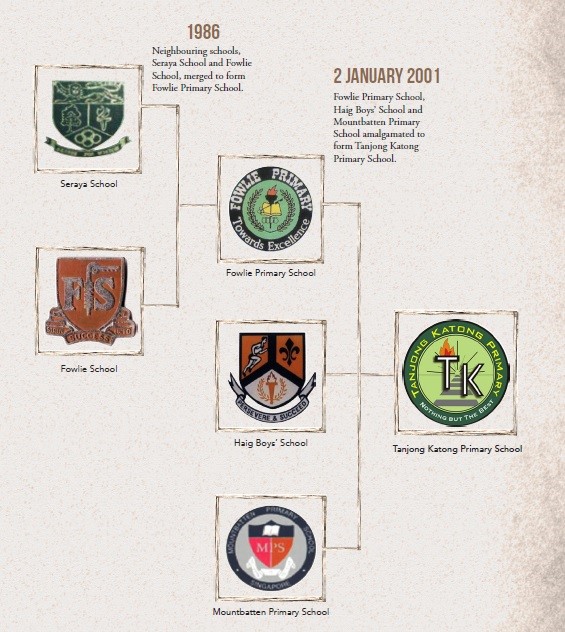
Seraya School
Seraya School was located on Seraya Road where Tanjong Katong Primary stands today. It had only one school block with three floors. It also shared a school field and dental clinic with a nearby school, Fowlie School. There was a big football field that separated Seraya School and Fowlie School. An imaginary line was drawn up on the shared field and students were not allowed to run across the ‘border’ especially during recess.
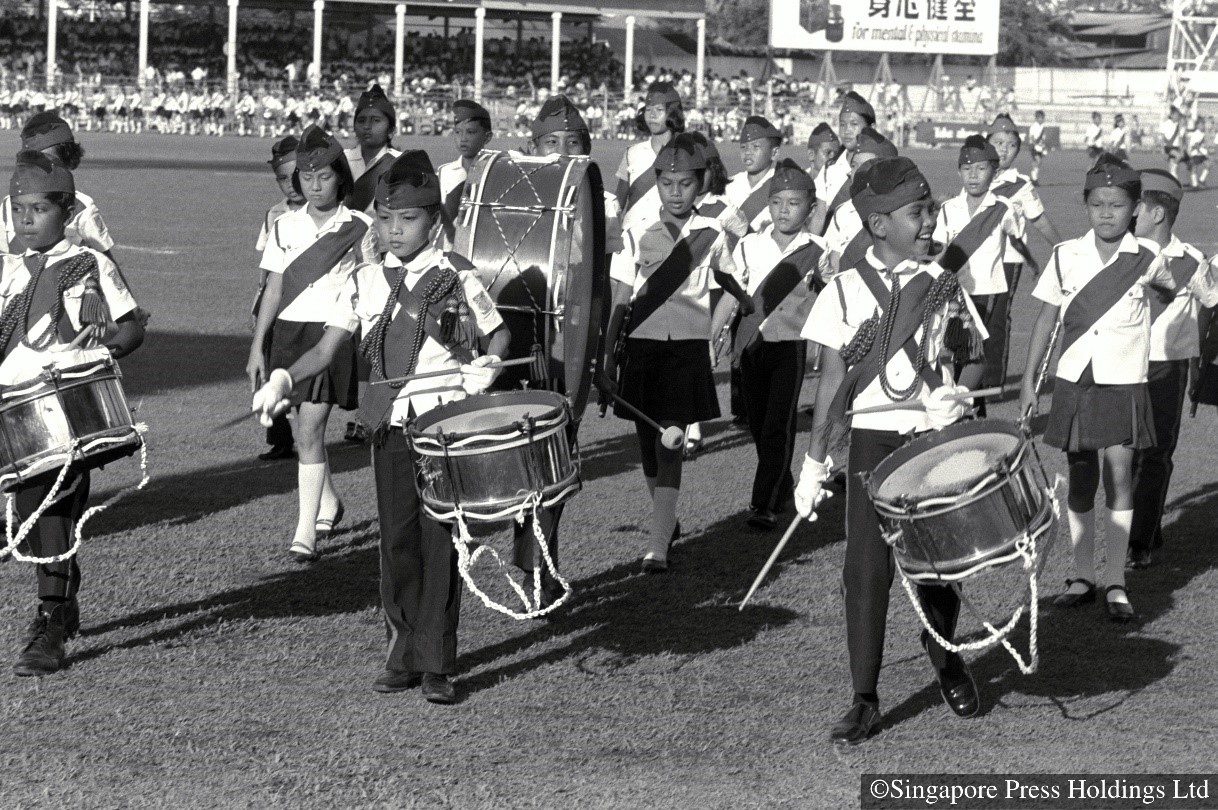
Due to low enrollment, both Seraya School and Fowlie School merged in 1986. The new school was named Fowlie Primary School.
Fowlie Primary School
Fowlie Primary School began life as Fowlie School at Fowlie Road. The road was named after Dr Peter Fowlie, a leading medical practitioner who later became the Municipal Commissioner in 1912.
When the school merged with Seraya School in 1986, the school was renamed Fowlie Primary School. In order to keep alive its link to Seraya School, the school had included Seraya’s flaming torch and four rings in its new badge.
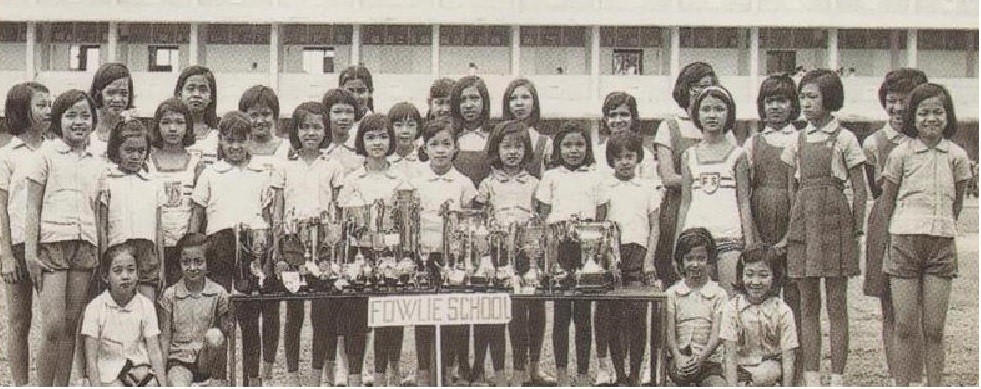
Haig Boys’ School
Haig Boys’ School was founded on 10 September 1951. It was originally located at 25 Jalan Tembusu before it moved to 231 Mountbatten Road in 1988. The school took its name from Haig Road. The road was named after a high-ranking officer of the British Army, Douglas Haig (1861 - 1928).
To help the boys get close to nature, the school started the Eco-Garden in 1981. Everyone in the school, from the principal to the teachers, from the school attendants to the students, worked very hard to build the garden and they were all very proud of it. Parents also helped out by donating frogs, tortoises and plants.
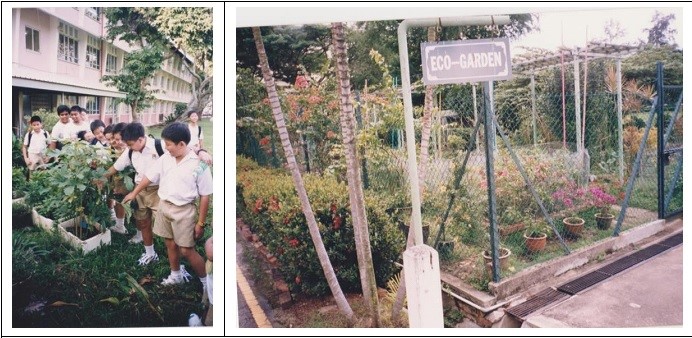
Mountbatten Primary School
Mountbatten Primary School took its name from Mountbatten Road. The road was named in honour of Lord Louis Mountbatten (1900 – 1979), a British Royal Navy officer who reached the highest rank of Admiral of the Fleet.
There were originally two Mountbatten schools - Mountbatten English Primary School and Mountbatten Government Chinese Primary School. They merged in the early 1980s to form Mountbatten Primary School.
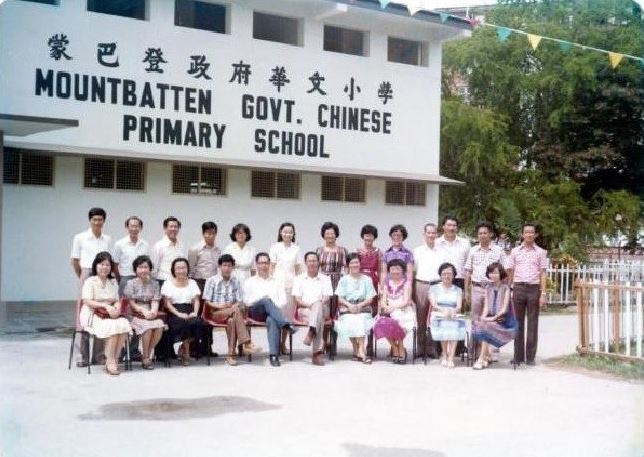
Tanjong Katong Primary School
In 2001, the three schools, Fowlie Primary, Haig Boys’ School and Mountbatten Primary School amalgamated and formed Tanjong Katong Primary School.
To capture the unique history and heritage of Tanjong Katong Primary, the school has launched the TKP Heritage Gallery to encourage our students to learn our past and preserve what we can for the future generation.
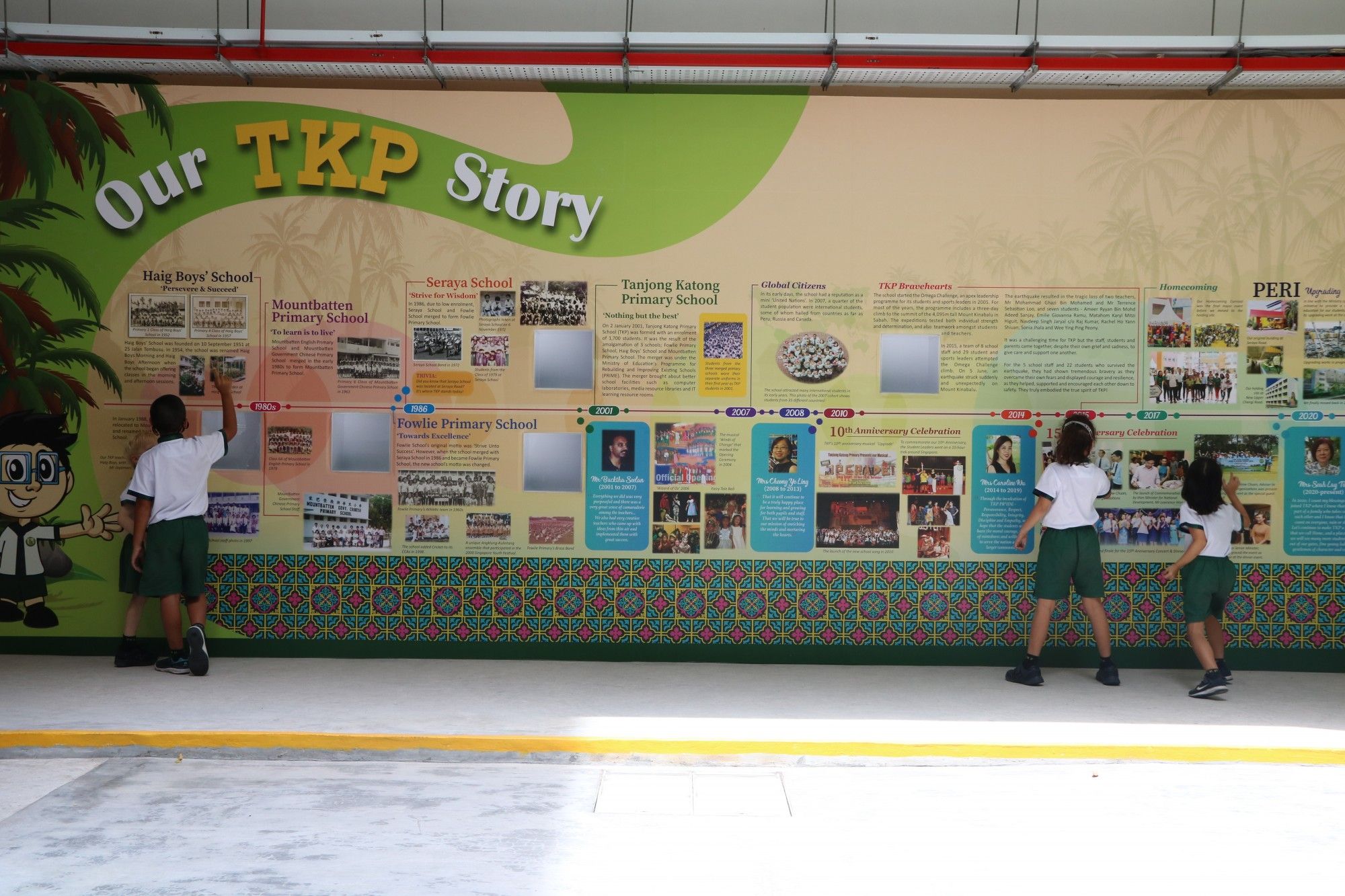
Our Beliefs
In TKP, we believe that every child is different and each comes with his/her unique talents and needs. As such, we are committed to nurturing each of them to fulfil his/her potential. We hope that through providing a holistic education that develop our students in the various domains, they will have opportunities to discover their strengths. We also hope that they would also be exposed to ways in which they can use what they have learnt to benefit others.
Our Vision, ‘Passionate Learners, Caring Leaders, Global Citizens’, is an expression of aspiration for our students so that they will be prepared and equipped for the Volatile, Uncertain, Complex and Ambiguous (VUCA) world and the future ahead. We strive to provide a dynamic learning environment so that our students may develop a love of learning, not just learning during their schooling years but into their life, long after they have left school. We nurture them so that they could excel in their pursuits. When they succeed in life, we hope that they would have empathy and care about others; and contribute back to the society. We would also like to continue to tap on the unique profile of the students to cultivate the cross-cultural skills essential for them to thrive in a globalised world.
To this cause, we will work with our partners, including parents, alumni and the community, to enrich the learning experiences of our students.

